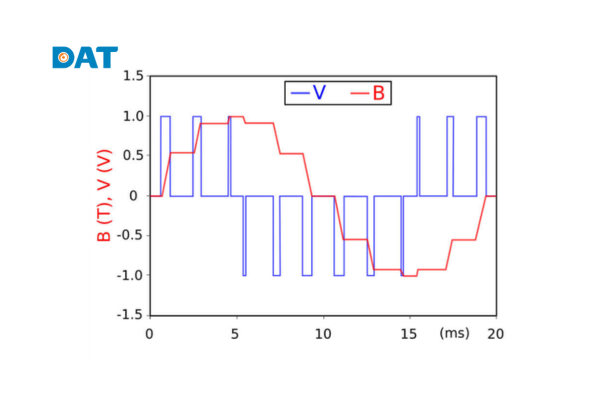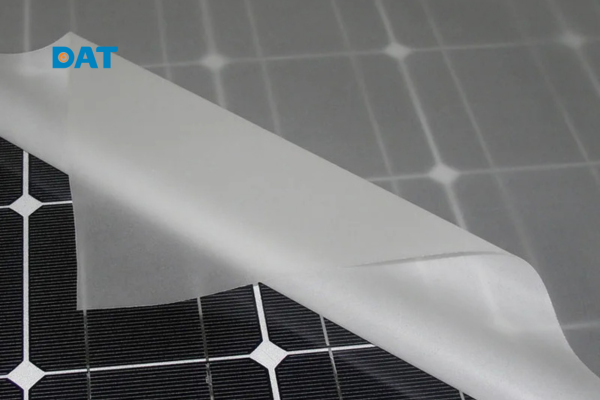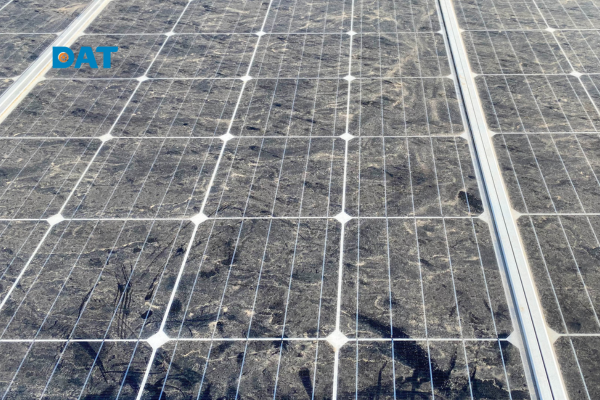Cách tính công suất pin, battery & diện tích của đèn NLMT
Trong công tác thiết kế, lựa chọn các sản phẩm phù hợp cho dự án đèn đường năng lượng mặt trời, việc tính toán chính xác các thông số về dung lượng pin lưu trữ Lithium, công suất tấm pin và chiều cao cột đèn là vô cùng cần thiết, giúp dự án tối ưu về hiệu quả và chi phí. Cũng như dựa vào công suất của các thiết bị để đánh giá chất lượng và giá thành của đèn năng lượng mặt trời.
Cấu tạo chung của đèn năng lượng mặt trời
Đèn năng lượng mặt trời được sử dụng khá phổ biến ở các công trình chiếu sáng lối đi của khu biệt thự, resort và các dự án đường nông thôn, giao thông đô thị thông minh, các công trình công cộng. Đèn vận hành hoàn toàn tự động, không cần đấu nối điện lưới, không tốn chi phí đi dây điện, đào đường, chỉ cần cắm trụ, lắp đặt đèn là có thể sử dụng ngay. Một hệ thống đèn đường năng lượng mặt trời thông thường bao gồm các bộ phận sau:
Đèn LED bao gồm hộp đèn và các module chứa các chip LED. Lớp vỏ hộp thường làm bằng nhôm có khả năng chịu lực tốt, tản nhiệt nhanh. Chip LED thường đến từ các thương hiệu cao cấp như Bridgelux (Mỹ), Philips (Hà Lan), Osram (Đức)… để đạt hiệu suất quang thông cao, tuổi thọ bền bỉ trên 12 năm.
Tấm pin năng lượng mặt trời có vai trò hấp thụ quang năng để sạc cho pin lưu trữ, có 2 loại: mono (silic đơn tinh thể) hoặc poly (đa tinh thể). Hiện nay, các hãng thường dùng loại mono cho khả năng hấp thụ quang năng tốt hơn, độ bền trên 25 năm. Tấm pin có thể được lắp liền thể chung với đèn LED hoặc tách riêng với đèn, có thể điều chỉnh được góc nghiêng phù hợp.
Pin lưu trữ có nhiều loại như lead-acid gel battery, Lithium LiFePo4 battery, 1865 Li-ion Battery,… được lắp đặt phía bên trong đèn hoặc nằm tách riêng ở bên ngoài. Hiện nay, nhờ công nghệ tiên tiến, các nhà cung cấp thường dùng pin lưu trữ loại Lithium sắt phốt phát (LiFePo4) với khả năng sạc, xả sâu và tuổi thọ lên đến 8 năm.
Bộ điều khiển có chức năng sạc/xả cho pin lưu trữ, có thể tùy chỉnh độ sáng, giám sát hoạt động và kéo dài tuổi thọ của pin lưu trữ và đèn. Khả năng điều khiển thông minh, giúp đèn tự sáng khi trời tối, tắt khi trời sáng theo cơ chế tự động.
Cột đèn thường được làm từ thép, mạ kẽm nhúng nóng giúp đáp ứng đa dạng các môi trường và khu vực lắp đặt.
Tính toán chiều cao của cột đèn và diện tích chiếu sáng
** Cách tính chiều cao cột đèn:
Để tính toán được chiều cao của cột đèn cần biết được các thông số về công suất đèn hoặc chiều rộng của con đường và kiểu hệ thống lắp đặt của từng dự án.
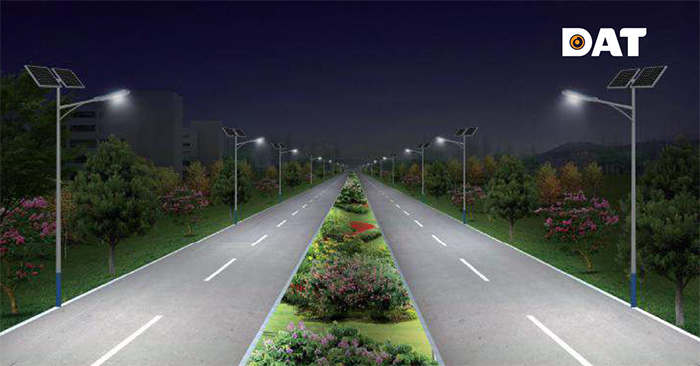
+ Nếu xét về yếu tố công suất đèn năng lượng mặt trời, ta có thể chọn chiều cao của cột theo gợi ý trong bảng thông số sau:
Lưu ý: Tính toán dưới đây dựa trên loại đèn dùng chip LED có độ sáng quang thông 170lm/W.
| Công suất đèn | Chiều cao cột đèn |
| 10 – 20W | 4m |
| 20 – 30W | 6m |
| 40 – 60W | 8m |
| 50 – 80W | 10m |
| 60 – 100W | 11m |
(Bảng thông số gợi ý của hãng Sokoyo)
+ Nếu xét về yếu tố chiều rộng con đường và mô hình kiểu lắp đặt, ta có 3 dạng mô hình phổ biến: lắp đặt 1 bên, lắp đặt 2 bên và lắp đặt kiểu Zigzag xen kẽ.
| Kiểu mô hình lắp đặt | Chiều rộng con đường | Chiều cao cột đèn |
| Lắp đặt 1 bên | N | N |
| Lắp đặt 2 bên | N | N / 2 |
| Lắp đặt kiểu Zigzag xen kẽ | N | N x 1,5 |
(Bảng công thức gợi ý của hãng Sokoyo)
VD: Muốn lắp đặt đèn năng lượng mặt trời cho con đường có chiều rộng 12m, lắp đặt kiểu 2 bên thì ta có thể chọn cột đèn có chiều cao là 12 / 2 = 6m.
Đồng thời, có thể tính được khoảng cách giữa các cột đèn với nhau theo công thức:
Khoảng cách giữa 2 cột đèn = Chiều cao cột x 3
VD: Nếu cột đèn có chiều cao 6m thì khoảng cách giữa 2 cột đèn sẽ là 6 x 3 =18m.
** Cách tính diện tích chiếu sáng:
Ta có công thức: Diện tích chiếu sáng = N x 3N
Với N là chiều cao cột đèn
VD: Đèn 60W với chiều cao cột là 8m, sẽ có diện tích chiếu sáng là 8 x 3 x 8 = 192m2
Lưu ý:
Cách tính này mang chỉ mang tính chất tương đối vì diện tích chiếu sáng phụ thuộc vào nhiều yếu tố như: chiều cao lắp đèn, góc chiếu của bat wing…
Tính toán dung lượng pin lưu trữ và công suất tấm pin
Để hiểu rõ hơn về cách tính dung lượng pin lưu trữ và công suất tấm pin cho từng dự án cụ thể, ta có thể xét một ví dụ điển hình sau đây.
**Cách tính dung lượng pin lưu trữ:
VD: Khách hàng có nhu cầu chiếu sáng như sau:
– Sử dụng đèn năng lượng mặt trời công suất 60W
– Chiếu sáng trong 12 giờ mỗi đêm, chế độ chiếu sáng theo khung thời gian:
- 0,5 giờ đầu có độ sáng 20% (từ 18h00 – 18h30)
- 1 giờ tiếp theo có độ sáng 100% (18h30 – 19h30)
- 3 giờ tiếp theo có độ sáng 50% (19h30 – 22h30)
- 7,5 giờ tiếp theo có độ sáng 20% (22h30 – 6h00)
– Thời gian dự trữ khi trời mưa kéo dài và hoàn toàn không có nắng là 3 ngày
Vậy, với những thông số trên, ta sẽ tính được dung lượng pin lưu trữ có độ xả sâu của battery 90% như sau:
 |
Dung lượng pin lưu trữ = (60W x 0,5h x 20% + 60W x 1h x 100% + 60W x 3h x 50% + 60W x 7,5h x 20%) x 3 / 90% = 820Wh. (Công suất battery cao hơn công suất của đèn khoảng 14 lần). |
** Cách tính công suất của tấm pin:
Để xác định được công suất của tấm pin năng lượng mặt trời phù hợp, ta cần thêm các thông số sau:
– Số giờ nắng trung bình tại Việt Nam: 4 giờ/ngày
– Tổn hao công suất trên tấm pin do bám bụi: 65%
– Dung lượng dự trữ của pin lưu trữ: 20%
– Công suất tấm pin được tính toán như sau:
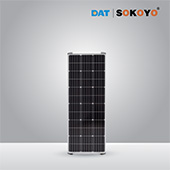 |
Công suất tấm pin = (60W x 0,5h x 20% + 60W x 1h x 100% + 60W x 3h x 50% + 60W x 7,5h x 20%) / 65% / 4h x (1 + 20%) = 114W (Công suất Tấm pin cao hơn công suất của Đèn khoảng 2 lần). |
Lưu ý:
– Công thức trên chỉ áp dụng đối với chế độ chiếu sáng mặc định
– Tùy thuộc vào nhu cầu, mục đích sử dụng, chế độ chiếu sáng, thời tiết, bức xạ… có thể chọn dung lượng pin lưu trữ và công suất tấm pin năng lượng mặt trời theo từng trường hợp (chỉ áp dụng với đèn dạng SPLIT).
Sau khi đã tìm hiểu cách tính toán dung lượng pin lưu trữ, công suất tấm pin, chiều cao cột đèn, diện tích chiếu sáng, Quý khách hàng có thể tham khảo thêm thông số kỹ thuật của một sản phẩm đèn năng lượng mặt trời Sokoyo.
Giới thiệu sản phẩm: NOVA – Đèn năng lượng mặt trời liền thể (All in One)
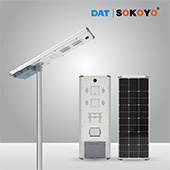 |
Mã sản phẩm | KY-Y-YF-004 |
| Công suất định mức | 60W | |
| Điện áp hệ thống | DC 12V | |
| Pin lithium | 864WH | |
| Tấm pin NLMT | Mono Panel: 18V/130W (505×1330mm) | |
| Chip LED | LUMILEDS3030/5050 | |
| Kiểu phân bố ánh sáng | Phân bố ánh sáng kiểu cánh dơi (150°x75°) | |
| Hiệu suất Chip LED | 170LM/W | |
| Nhiệt độ màu | 3000K/4000K/5700K/6500K | |
| Chỉ số hoàn màu | Ra≥70 | |
| Cấp bảo vệ IP | IP65 | |
| Cấp bảo vệ IK | IK08 | |
| Nhiệt độ hoạt động | -10℃~+60℃ | |
| Khối lượng | 24kg | |
| Tuổi thọ LED | ≥50000H | |
| Bộ điều khiển | SES120 | |
| Đường kính trụ đỡ | φ76mm | |
| Kích thước đèn | 1357x518x173mm | |
| Kích thước kiện hàng | 1410x580x150mm | |
| Chiều cao lắp đặt | 7 m / 8 m / 9 m |
Chip LED
- Thương hiệu: Lumiled Philips (Hà Lan)
- Hiệu suất chip LED: 170lm/W
- Tuổi thọ chip LED khoảng 50.000h (khoảng 12 -15 năm)
- Mỗi chip LED sẽ có 1 thấu kính chóa đèn (bat wing) riêng.
Battery
- Loại pin lưu trữ là Lithium LiFePO4
- Dung lượng battery 864Wh, gấp 14 lần công suất đèn, đảm bảo chiếu sáng 3 ngày dù trời mưa, thiếu nắng.
- Lên đến 2.000 chu kỳ xả sâu, an toàn và đáng tin cậy, không cháy nổ. Tuổi thọ khoảng 5 – 8 năm.
Tấm pin
- Loại tấm pin: mono
- Hiệu suất cell lên đến 21%
- Công suất: 130Wp, lớn hơn 2,2 lần công suất của đèn, đảm bảo hấp thu năng lượng sạc nhanh cho battery.
Bộ điều khiển thông minh (controller)
- Có khả năng điều khiển thông minh về thời gian chiếu sáng, giám sát mức sạc, xả của battery giúp kéo dài tuổi thọ, bảo vệ quá tải, hiệu suất sạc cao, tối đa hóa hiệu suất của tấm pin. Tự động bật đèn khi trời tối, tắt đèn khi trời sáng.
- Có thể kết nối với hệ thống quản lý và giám sát IoT.
Cảm biến chuyển động
- Hiện nay, các sản phẩm đã được ứng dụng công nghệ cảm biến microwave (công nghệ cũ cảm biến PIR) giúp nhận biết chuyển động nhanh, chuyển chế độ sáng tức thì.
Đèn năng lượng mặt trời NOVA đầy đủ CO, CQ; test report của Chip LED; chứng chỉ sản phẩm CE, RoHS, IEC… Ngoài ra, còn có chính sách bảo hành chính hãng tại Việt Nam, bảo hành dài hạn 3 – 5 năm.
Hy vọng với những thông tin mà DAT Solar vừa chia sẻ, bạn sẽ tính toán được các thông số về dung lượng pin lưu trữ, công suất tấm pin và chiều cao cột đèn để lựa chọn được những sản phẩm phù hợp cho dự án đèn đường năng lượng mặt trời của mình.
Nếu vẫn còn băn khoăn về sản phẩm hoặc các giải pháp chiếu sáng, vui lòng liên hệ hotine 1800 6567 (miễn phí cước gọi) để được tư vấn và hỗ trợ 24/7.



